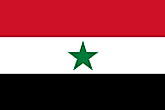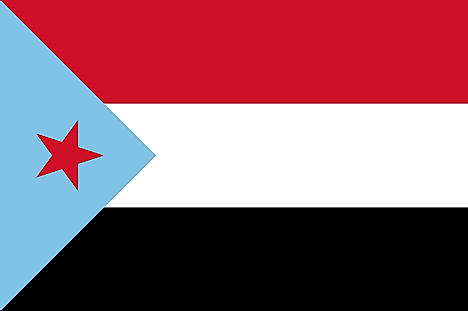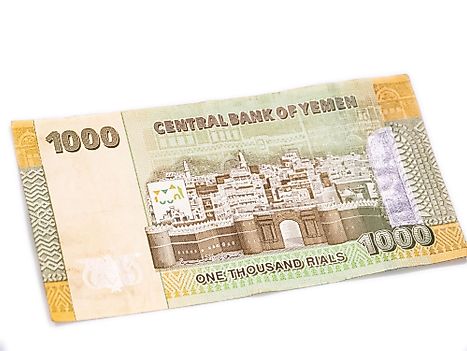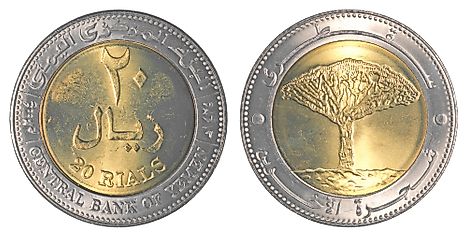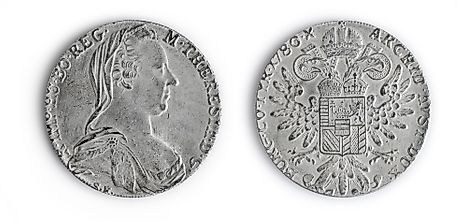Flags, Symbols & Currency of Yemen
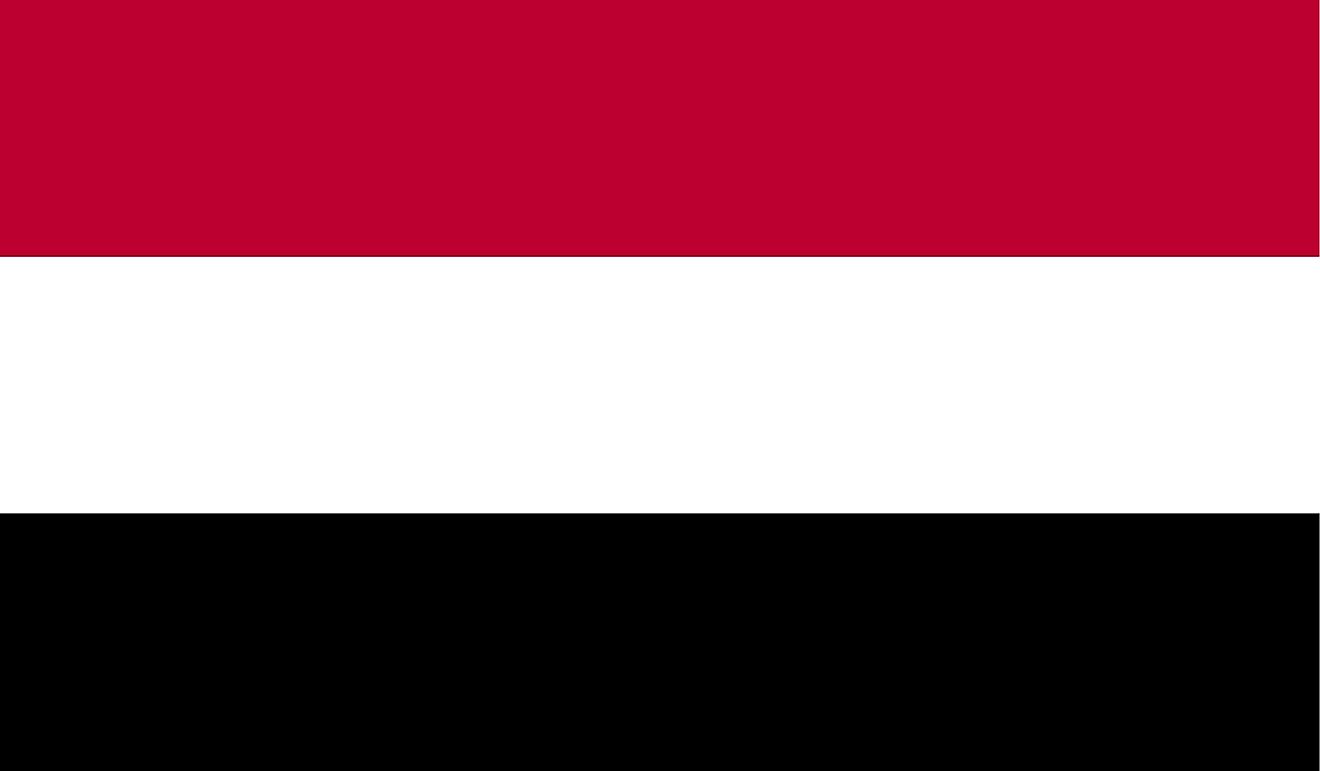
The National Flag of Yemen was officially adopted on May 22, 1990.
The National Flag of Yemen is a horizontal tricolor and features three equal horizontal bands of the Pan-Arab colors: red (top), white (middle), and black (bottom). The band colors are derived from the Arab Liberation flag and symbolize Arab unity. The red color symbolizes the unity of the nation and the blood that was shed by martyrs. The white color represents the bright future of the nation and its people. The black color signifies the nation's dark history. The flag has a height-to-width proportion ratio of 2:3.
History of the Flag of Yemen
Modern Yemen was established in 1990 and was previously divided into two separate nations: North Yemen and South Yemen. The two territories each had their flag, although they were similar to the flag of Yemen. The flags of North Yemen and South Yemen both featured a tricolor of Pan-Arab colors, and each also included a unique symbol.
North Yemen was the first to attain independence in 1918, after years of rule under the Ottoman Empire. A religious leader was able to rally the support of the people and proclaim their independence. The region then used the flag of the Mutawakkilite Kingdom of Yemen, which was a red field. The flag changed a couple of times until the Yemen Arab Republic flag was introduced in 1962 and used until 1990. The new flag was similar to Yemen’s current flag but featured a green five-pointed star on the white middle band.
South Yemen gained independence from British rule in 1967 and established the People’s Republic of South Yemen, which later became the People’s Democratic Republic of Yemen. The flag of the region also bore many similarities to Yemen’s flag. It featured the same tricolor in Pan-Arab colors, plus a sky-blue triangle bearing a red star on the hoist side of the flag, which was a symbol of the Yemeni Socialist Party.
When the two regions decided to merge, reaching a common ground for the new flag was relatively simple. Since the two flags were essentially the same, the two agreed to remove their distinguishing features and continue to use the Pan-Arab tricolor which was officially adopted on May 22, 1990.
The new flag closely resembled the 1952 Arab Liberation Flag that was introduced after the 1952 Egyptian Revolution. Similarly, the Arab Liberation Flag served as inspiration for the design of the flags of North Yemen and South Yemen before unification.
Symbols of Yemen
Emblem of Yemen
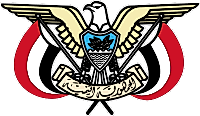
The National Coat of Arms/Emblem of Yemen was officially adopted in 1990. It is composed of a golden eagle bearing a shield on its chest. The shield depicts the Marib Dam, a coffee plant and seven blue wavy stripes. To the left and right of the eagle are Yemen national flags, and in the talons of the eagle is a scroll with the name of the country scripted in Arabic: الجمهورية اليمنية or Al-Jumhuriyyah Al-Yamaniyah ("The Yemeni Republic").
National Motto
"Allah, al-Watan, ath-Thawrah, al-Wahdah" ("God, Country, Revolution, Unity")
National Anthem
- Anthem Title: "United Republic"
- Music Composer: Ayub Tares
- Lyricist: Abdollah Abdolwahâb Noʿmân
- Date of Adoption: 1990
"United Republic" is the national anthem of Yemen. The music of the anthem have been composed by Ayub Tares. The lyrics of the anthem have been authored by Abdollah Abdolwahâb Noʿmân. The national anthem was officially adopted in 1990 upon reunification of North and South Yemen.
الجمهورية المتحدة (Arabic)
:جوقة
رددي أيتها الدنيا نشيدي
ردديه وأعيدي وأعيدي
واذكري في فرحتي كل شهيد
وامنحيه حللاً من ضوء عيدي
رددي أيتها الدنيا نشيدي
۱
وحدتي، وحدتي
يانشيداً رائعاً يملاُ نفسي
أنت عهد عالق في كل ذمة
رايتي، رايتي
يانسيجاً حكته من كل شمس
أخلدي خافقة في كل قمة
أمتي، أمتي
امنحيني البأس يامصدر بأسي
واذخريني لك يا أكرم أمة
۲
عشت إيماني وحبي أمميا
ومسيري فوق دربي عربيا
وسيبقى نبض قلبي يمنيا
لن ترى الدنيا على أرضي وصيا
"United Republic"
Chorus:
Repeat, O World, my song.
Echo it over and over again.
Remember, through my joy, each martyr.
Clothe her with the shining mantles of our festivals.
? O World, my song. ?
1.
My unity, my unity
O marvelous song which fills my heart,
You are the promise of all to come,
My banner, my banner
O cloth nailed from every sun
Raised forever, on every peak
My nation, my nation
give me strength, o source of strength
And save me for you, the best of nations.
2.
In faith and love I am part of mankind,
And I shall march first among the Arabs.
And my heart beat shall remain that of a Yemenite.
No foreigner shall ever hold dominion over Yemen.
The Currency of Yemen is the Yemeni rial
The current official currency of Yemen is Yemeni rial, or riyal (YER, ﷼ ). The rial is sub-divided into 100 fils. The Central Bank of Yemen is responsible for issuing and circulating the Yemeni rial.
Coins
The first Yemeni coins were issued in 1993. They were prouduced in denominations of 1, 5, 10, 15, 25, and 50 fils, and 1 rial. Fils eventually ran out during circulation and currently all coins are in rials. The 1 and 5 rial coins were first issued in 1993, the 10 rial coins in 1995, and ultimately the 20 rial coins in 2004. As a result, the coins used presently in Yemen are available in 1, 5, 10, and 20 rials.
Banknotes
Prior to the Yemeni unification, the banknotes in existence were 1, 5, 10, 20, 50, and 100 rials. However, in 1993, the 1 and 5 rial coins replaced the 1 and 5 rial notes. Similarly, the 10 and 20 rial notes were replaced by 10 and 20 rial coins in 1995 and 2004, respectively. On the other hand, 200, 500, 1000, and 250 rial banknotes were introduced in the years of 1996, 1997, 1998, and 2009, respectively. The banknotes used in Yemen today are denominated in 50, 100, 200, 250, 500, and 1,000-rials. The features on the notes include Ancient culverts, Seiyun Palace, Mukalla and Alabaster sculpture. In addition, the notes are blue, green, purple, and yellow in color.
Historical Currencies of Yemen
In the 18th and 19th centuries, Mocha coffee trade was conducted using the Maria Theresa thaler, which was a form of silver bouillon coin popular in world trade. Later, Yemen minted its own currency called the rial. In 1990, the North Yemen (Yemen Arab Republic) and South Yemen (People's Democratic Republic of Yemen) united and after this unification, both the southern dinar and northern rial were acceptable during the transition period. The switching of the currency was done by exchanging 1 dinar for 26 rials. The dinar was withdrawn from circulation on June 11, 1996.
